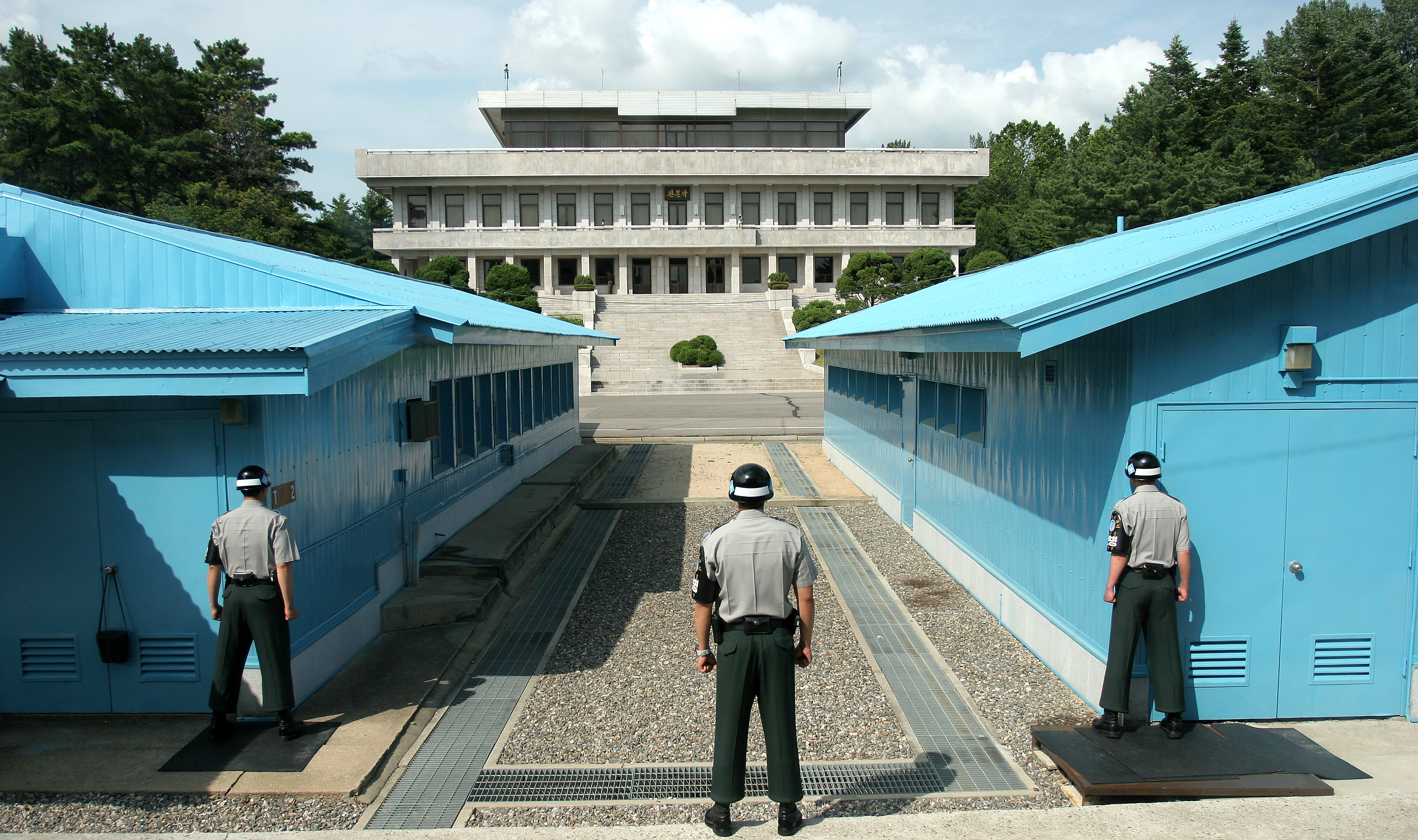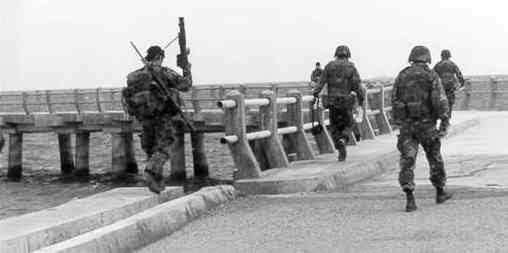|
Operation Claret
Claret was the code name given to operations conducted from about July 1964 until July 1966 from East Malaysia (Sarawak and Sabah) across the border in Indonesian Kalimantan during the Indonesia–Malaysia confrontation. They were instigated by the Director of Borneo Operations (DOBOPS) Major General Walter Walker with the agreement of the British and Malaysian governments. Their purpose was to seize the initiative and put the Indonesians on the defensive instead of allowing Indonesian forces to be safely based in Kalimantan and attack when and where they chose. However, it was important not to cause the Indonesians to lose face and possibly escalate the conflict, or to enable Indonesia to present evidence of 'imperialist aggression', so Claret operations were highly classified and never publicised, although it seems that some British journalists were aware of what transpired. British casualties on Claret operations were publicly reported as being in East Malaysia. These o ... [...More Info...] [...Related Items...] OR: [Wikipedia] [Google] [Baidu] |
British Army
The British Army is the principal Army, land warfare force of the United Kingdom. the British Army comprises 73,847 regular full-time personnel, 4,127 Brigade of Gurkhas, Gurkhas, 25,742 Army Reserve (United Kingdom), volunteer reserve personnel and 4,697 "other personnel", for a total of 108,413. The British Army traces back to 1707 and the Acts of Union 1707, formation of the united Kingdom of Great Britain which joined the Kingdoms of Kingdom of England, England and Kingdom of Scotland, Scotland into a Political union, single state and, with that, united the English Army and the Scots Army as the British Army. The Parliament of England, English Bill of Rights 1689 and Convention of the Estates, Scottish Claim of Right Act 1689 require parliamentary consent for the Crown to maintain a peacetime standing army. Members of the British Army swear allegiance to the Charles III, monarch as their commander-in-chief. The army is administered by the Ministry of Defence (United Kingd ... [...More Info...] [...Related Items...] OR: [Wikipedia] [Google] [Baidu] |
Battle Of Sungei Koemba
The Battle of Sungei Koemba (27 May – 12 June 1965) took place during the Indonesia–Malaysia confrontation. Involving Australian and Indonesian troops, the battle consisted of a series of ambushes launched by the 3rd Battalion, Royal Australian Regiment (3 RAR), along the Sungei Koemba river in Kalimantan (Indonesian Borneo). The ambushes were part of the wider Operation Claret which involved cross-border operations by British-Commonwealth units from bases in Sarawak, penetrating up to into Indonesian territory with the aim of disrupting the movement and resupply of Indonesian forces and to keep them off balance. The first ambush was conducted by two platoons from B Company on 27 May 1965 and resulted in significant Indonesian casualties, for no loss to the Australians. The second ambush was conducted a fortnight later and was set a little further downstream from the last one, this time by a platoon from C Company, occurring on 12 June 1965 and again resulting in he ... [...More Info...] [...Related Items...] OR: [Wikipedia] [Google] [Baidu] |
3rd Battalion, Royal Australian Regiment
The 3rd Battalion, Royal Australian Regiment (3 RAR) is the armoured infantry battalion of the Australian Army, based in Kapyong Lines, Townsville as part of the 3rd Brigade (Armoured Amphibious). 3 RAR traces its lineage to 1945 and has seen operational service in Japan, Korea, Malaya, Borneo, South Vietnam, Rifle Company Butterworth, East Timor, the Solomon Islands, Afghanistan, and Iraq. History Formation 3 RAR was initially formed on 20 October 1945 from volunteers from the 3rd, 6th, 7th and 11th Australian Divisions, as the 67th Battalion of the 34th Brigade (Australia) on Morotai. The battalion was intended to be part of a wider commitment for occupation duties as part of the British Commonwealth Occupation Force in Japan. The 67th Battalion arrived in Japan as part of the Australian 34th Brigade in February 1946. As with the rest of the occupation force, the battalion did not encounter any significant resistance or civil unrest. The 67th Battalion was redesign ... [...More Info...] [...Related Items...] OR: [Wikipedia] [Google] [Baidu] |
Ordnance ML 4
Ordnance may refer to: Military and defense *Materiel in military logistics, including weapons, ammunition, vehicles, and maintenance tools and equipment *Artillery *Artillery shells *Aircraft ordnance, weapons carried by and used by an aircraft Places *Ordnance, Oregon, United States *Ordnance Island, Bermuda Maps-related *Ordnance datum (from use in ballistics), a vertical datum used as the basis for deriving altitudes on maps *Ordnance Survey The Ordnance Survey (OS) is the national mapping agency for Great Britain. The agency's name indicates its original military purpose (see Artillery, ordnance and surveying), which was to map Scotland in the wake of the Jacobite rising of ..., the national mapping agency for Great Britain See also * Ordnance Corps (other) {{disambiguation, geo ... [...More Info...] [...Related Items...] OR: [Wikipedia] [Google] [Baidu] |
BL 5
BL (or similar) may refer to: Arts and entertainment * Boys' love, a Japanese term for fiction featuring romantic relationships between male characters * BL Publishing, a division of the wargames manufacturing company, Games Workshop * ''Boston Legal'', a US legal comedy-drama Businesses and organizations * Balmer Lawrie, an Indian central public sector undertaking conglomerate * Bell Labs, an audio-technology research and design enterprise * Boys' Latin School of Maryland, a US private school * Brisbane Lions, an Australian rules football team in the Australian Football League * British Library, the UK's national library * British Leyland, a former UK vehicle manufacturing company * Pacific Airlines (IATA code BL), a low-cost airline * Lytvyn Bloc, a Ukrainian political party Food and drink * Bitter lemon, a carbonated soft drink * Bud Light, an American lager beer Law * Bachelor of Laws (B.L.), an undergraduate degree in law * Barrister-at-Law, a degree and professional ... [...More Info...] [...Related Items...] OR: [Wikipedia] [Google] [Baidu] |
OTO Melara Mod 56
The OTO-Melara Mod 56 is an Italian-made 105 mm pack howitzer built and developed by OTO Melara. It fires the standard US type M1 ammunition. History The OTO Melara 105 mm Mod 56 began life in the 1950s to meet the requirement for a modern light-weight howitzer that could be used by the Italian Army's '' Alpini'' brigades mountain artillery regiments. That it remained in service with those units a full half century after its introduction is a testament to the gun's quality. The Mod 56 has a number of unique characteristics for a weapon of its caliber, including the ability for its crew to manhandle the gun (due to its light weight), and the capability of being used in the direct fire role. Being a pack howitzer, it is designed to be broken down into 12 parts, each of which can be transported easily. Its ability to be "knocked-down" allows the sections to be transported a number of ways, although the original design was for mule-pack using special pack saddles. More often ... [...More Info...] [...Related Items...] OR: [Wikipedia] [Google] [Baidu] |
Border Scouts
Borders are generally defined as geographical boundaries, imposed either by features such as oceans and terrain, or by political entities such as governments, sovereign states, federated states, and other subnational entities. Political borders can be established through warfare, colonization, or mutual agreements between the political entities that reside in those areas. Some borders—such as most states' internal administrative borders, or inter-state borders within the Schengen Area—are open and completely unguarded. Most external political borders are partially or fully controlled, and may be crossed legally only at designated border checkpoints; adjacent border zones may also be controlled. For the purposes of border control, airports and seaports are also classed as borders. Most countries have some form of border control to regulate or limit the movement of people, animals, and goods into and out of the country. Under international law, each country is generally permitt ... [...More Info...] [...Related Items...] OR: [Wikipedia] [Google] [Baidu] |
New Zealand Special Air Service
The 1st New Zealand Special Air Service Regiment, abbreviated as 1 NZSAS Regt, is the special forces unit of the New Zealand Army, closely modelled on the British Special Air Service (SAS). It was formed on 7 July 1955. It traces its origins to the Second World War and the famous Long Range Desert Group that New Zealanders served with. The New Zealand Government states that NZSAS is the "premier combat unit of the New Zealand Defence Force" and it has been operationally deployed to locations including the Pacific region, Afghanistan, and the jungles of South-East Asia. Individual members of the NZSAS have received honours and awards, most notably the Victoria Cross for New Zealand awarded to Corporal Willie Apiata. In 2004, the unit was awarded the Presidential Unit Citation (United States), United States Presidential Unit Citation for its contribution in Afghanistan. The NZSAS was accorded regimental status in 2013. It has the responsibility of conducting counter-terrorism and ... [...More Info...] [...Related Items...] OR: [Wikipedia] [Google] [Baidu] |
Special Air Service Regiment
The Special Air Service Regiment, officially abbreviated SASR though commonly known as the SAS, is a special forces unit of the Australian Army. Formed in 1957 as a company, it was modelled on the British SAS with which it shares the motto, "Who Dares Wins". Expanded to a regiment in August 1964, it is based at Campbell Barracks, in Swanbourne, a suburb of Perth, Western Australia, and is a direct command unit of the Special Operations Command. The regiment first saw active service in Borneo in 1965 and 1966 during the Indonesian Confrontation, mainly conducting reconnaissance patrols, including secret cross-border operations into Indonesian territory. The regiment's three squadrons were rotated through Vietnam, carrying out tasks included medium-range reconnaissance patrols, observation of enemy troop movements, and long-range offensive operations and ambushing in enemy dominated territory. They also served with US Army Special Forces, and conducted training missions. T ... [...More Info...] [...Related Items...] OR: [Wikipedia] [Google] [Baidu] |
Parachute Regiment (United Kingdom)
The Parachute Regiment, known colloquially as the Paras, is the Airborne forces, airborne and elite infantry regiment of the British Army. The 1st Battalion, Parachute Regiment, first battalion is part of the Special Forces Support Group under the operational command of the United Kingdom Special Forces, Director Special Forces. #Structure, The other battalions are the Paratrooper, parachute infantry component of the British Army's rapid response formation, 16 Air Assault Brigade. Alongside the five regiments of Foot Guards, the Parachute Regiment is the only infantry regiment of the British Army that has not been amalgamated with another unit since the end of the Second World War. The Parachute Regiment was formed on 22 June 1940 during the Second World War and eventually raised 17 battalions. In Europe, these battalions formed part of the 1st Airborne Division (United Kingdom), 1st Airborne Division, the 6th Airborne Division (United Kingdom), 6th Airborne Division and the 2nd ... [...More Info...] [...Related Items...] OR: [Wikipedia] [Google] [Baidu] |
Gurkha
The Gurkhas or Gorkhas (), with the endonym Gorkhali ( Nepali: गोर्खाली ), are soldiers native to the Indian subcontinent, chiefly residing within Nepal and some parts of North India. The Gurkha units consist of Nepali and (in India) Indian Gorkha, Nepali-speaking Indian people. They are recruited for the Nepali Army (96,000), the Indian Army (42,000), the British Army (4,010), the Gurkha Contingent in Singapore, the Gurkha Reserve Unit in Brunei, and for UN peacekeeping forces and in war zones around the world. Ordinary citizens of the two demographic groups become a Gurkha by applying for, and passing, the selection and training process. Gurkhas are closely associated with the '' khukuri'', a forward-curving knife, and have a reputation for fearless military prowess. Former Indian Army Chief of Staff Field Marshal Sam Manekshaw once stated that: Origins Historically, the terms "Gurkha" and "Gorkhali" were synonymous with "Nepali", which originates ... [...More Info...] [...Related Items...] OR: [Wikipedia] [Google] [Baidu] |





